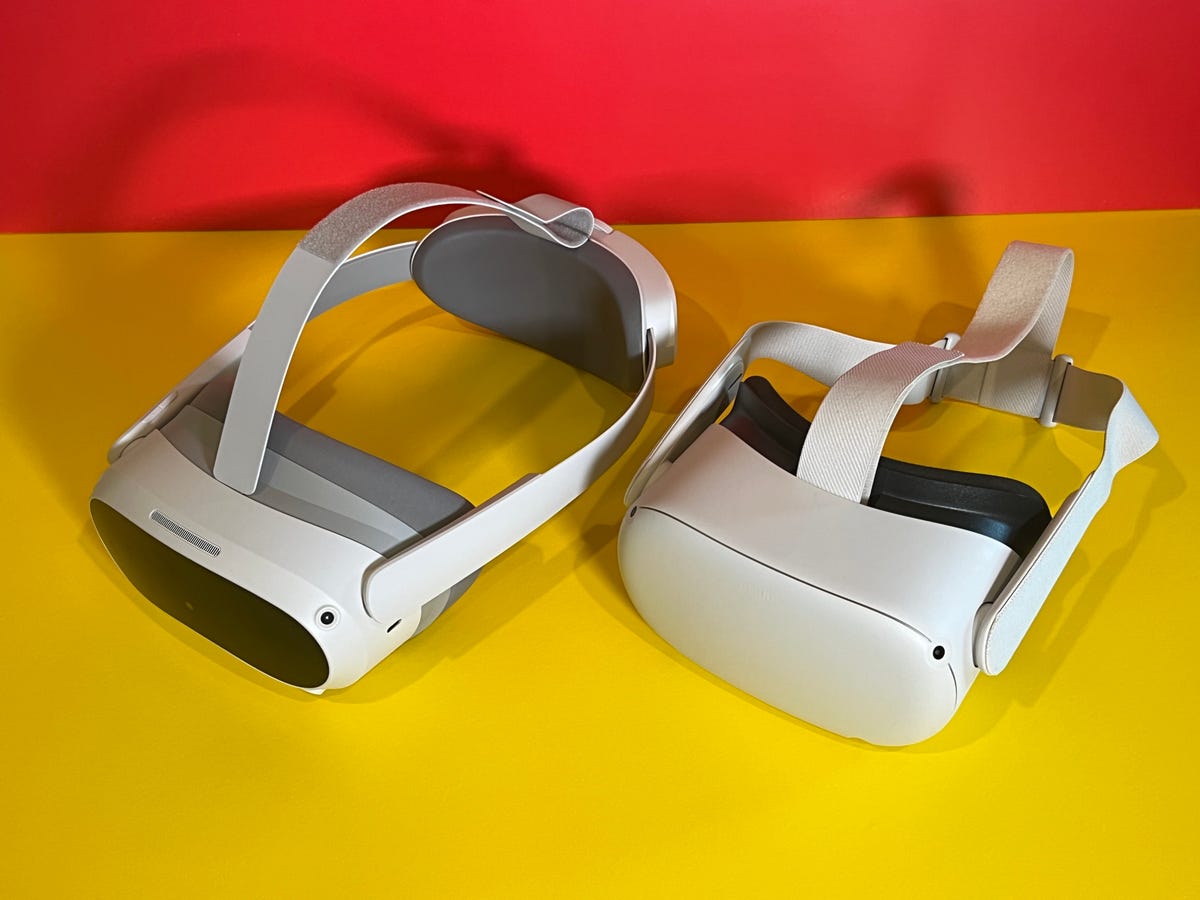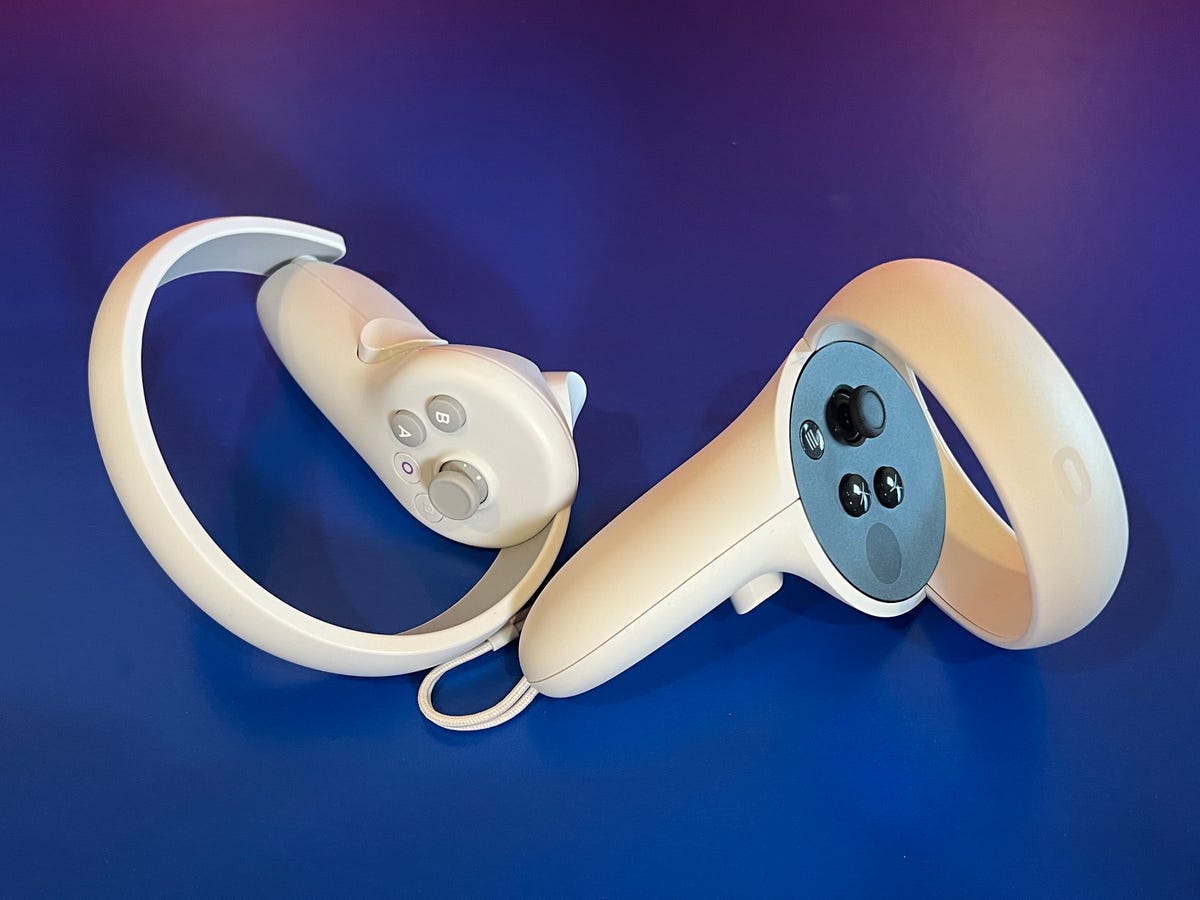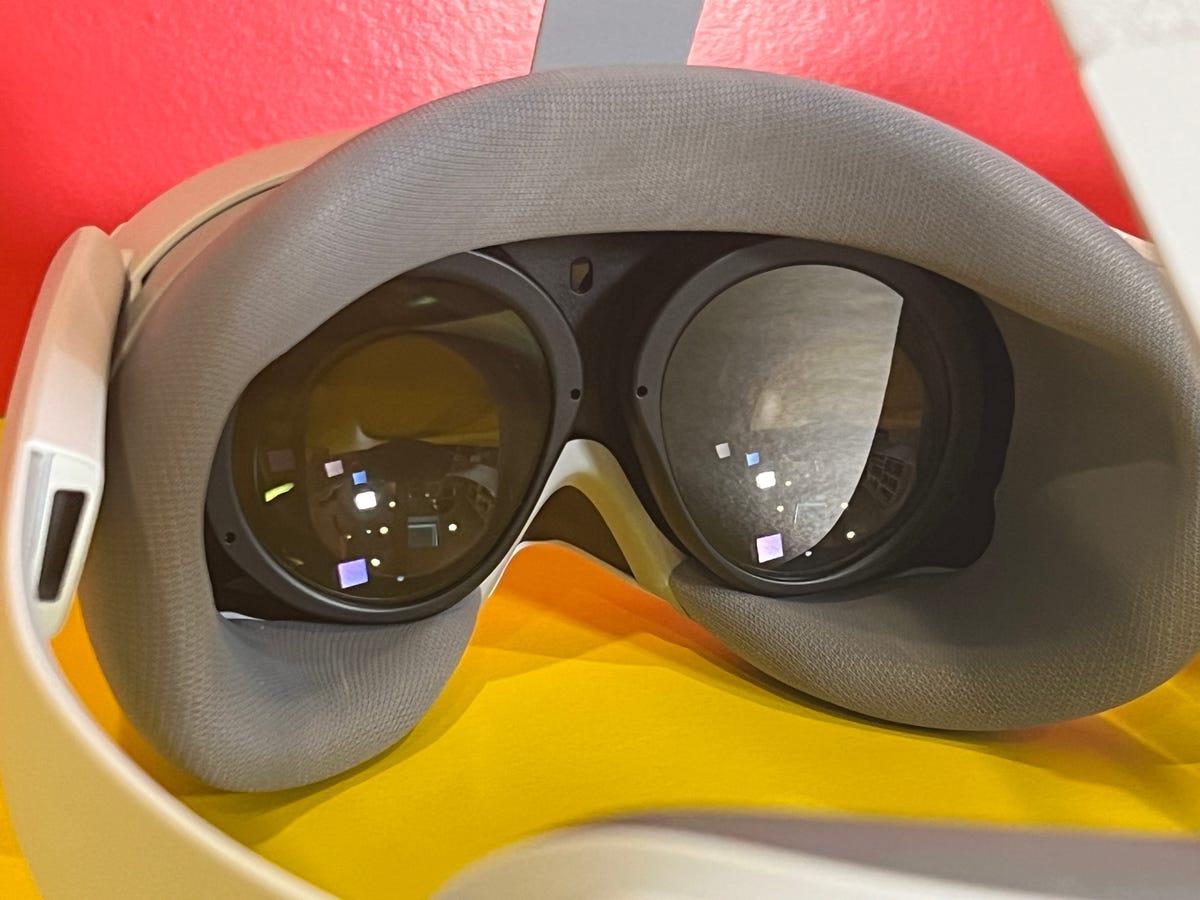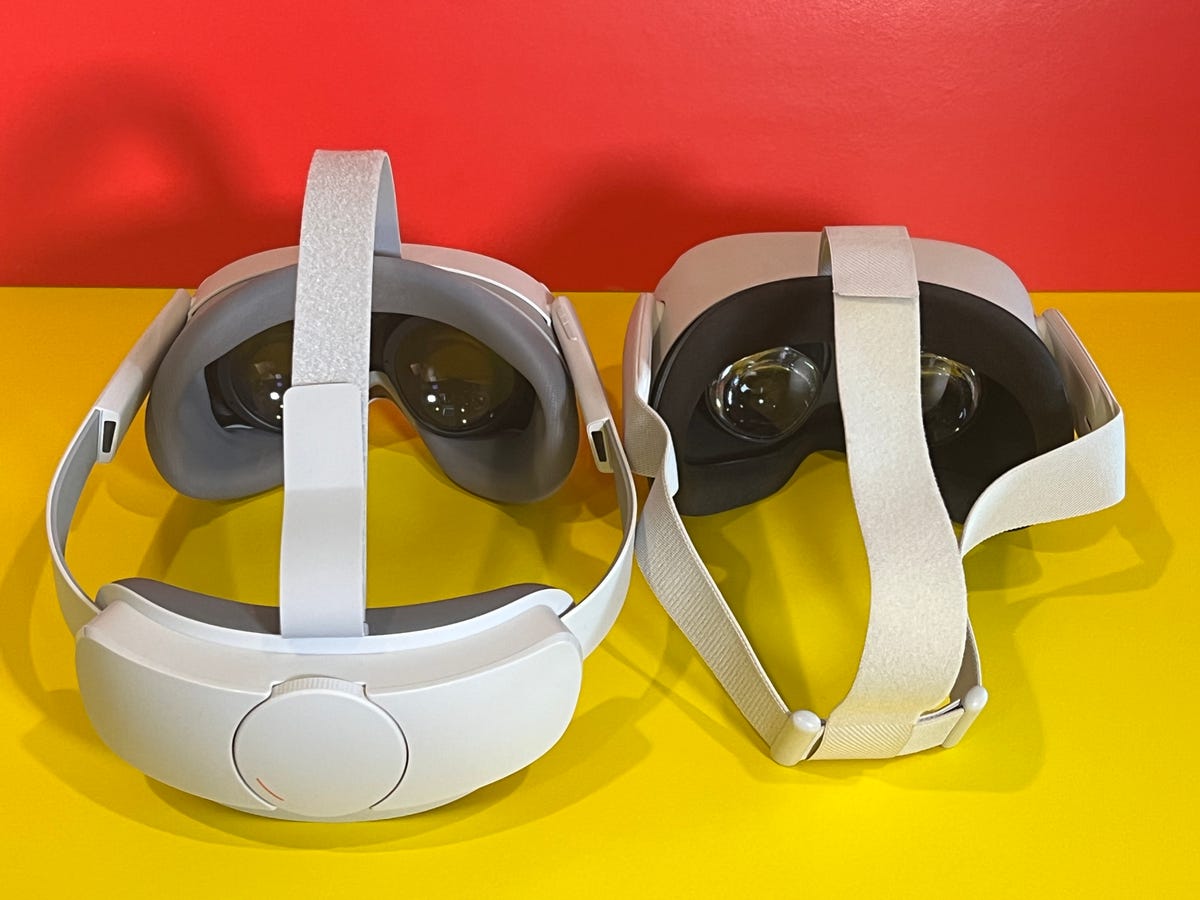I’m lining up for a shot in mini-golf. I’m playing table tennis. I’m putting together a 3D puzzle. I’m shooting undead creatures with a bow and arrow. These are the things I usually do with a Meta Quest 2 VR headset, but this time I’m doing them strapped into the Pico 4, and it feels much the same.
The Pico 4, made by Bytedance (TikTok’s parent company), feels like the very first true competitor to the 2-year-old Quest 2 VR headset from Meta (formerly Facebook). It’s a possible sign that standalone VR headsets in the next few years may see more hardware options. But it still may not be a better choice. At least, not for me.
The Pico 4 isn’t available in the US, but in Asian and European markets it’s competitively priced compared to the Quest 2: in fact, it undercuts it. The Pico 4 feels very Quest 2-like: responsive controllers (that use AA batteries), a Qualcomm Snapdragon XR2 processor, and a library of games and apps that often overlaps with some of the best titles the Quest 2 has.
It even has a few upgrades. But it has a few downsides, too.
Price and availability
The Pico 4 is priced at 429 euros for the 128GB model and 499 euros for the 256GB version. It won’t be available in the US, but the starting price converts to roughly $425, £375 or AU$640. This undercuts the Meta Quest 2, which starts at $400 (or 450 euros) for the same storage options.
The headset is available in 13 European countries, Japan and Korea at first. ByteDance doesn’t have any plans to release the Pico 4 in the US in the future, instead opting for a business-focused pro-level version with eye tracking arriving next year that could compete with the Meta Quest Pro.

The Pico 4 (left) is significantly smaller in the front than the Quest 2 (right), but the battery gets moved to the larger back strap.
Scott Stein/CNET
Display and design: Like a Quest 2 upgrade
The slimmed-down Pico 4 headset design, which uses a new type of pancake lens (also used in Meta’s new Quest Pro), shrinks down the front of the headset. The Pico 4 still feels like VR goggles, but it’s notably more compact on my face. Unfortunately, just like the Quest 2, the foam-covered headset eyepiece doesn’t quite fit over my extra-wide glasses.
Other than that, I love the fit of the Pico 4. A battery on the back of the adjustable head strap balances weight out more, letting the headset rest lighter on my head. The Quest 2, in comparison, comes with an elastic head strap that feels less comfy but more compact. Optional add-on head straps for the Quest 2, including Meta’s Elite Strap, that are closer to the Pico design. The headset slides on and off easily, with the front angling up a bit so I feel like I’m able to dip into VR much faster than on the Quest 2.
The headset’s LCD displays have a 2,160×2,160-pixel resolution per eye, which is better than the Quest 2’s 1,832×1,920-pixel displays. But with most of the apps I’ve tried, it’s hard to note a big difference. The refresh rate can ramp up 90Hz if you enable it in the settings, but it won’t allow 120Hz yet like the Quest 2 can. The field of view in the headset is wider than the Quest 2, as well (105 degrees), so panoramas in games feel a little less like you’re peering through a scuba mask. I love the way things look.
The passthrough cameras, which shows your surroundings on the headset display, are also higher-res full-color compared with the Quest 2’s grainier black and white. I could look around my office with the headset on and see greater detail, but there are drawbacks: While the Pico 4 has a similar draw-your-play-area boundary setup than can be used with the headset on, there aren’t any big mixed reality applications I could find. The Fruit Ninja game on the Pico app store has a passthrough-enabled mode, but the VR aspects didn’t line up with the real world… they were just layered on top.
The far more expensive Meta Quest Pro I tried recently had an actual ability to layer virtual objects onto 3D real world environments: the Pico 4, at least with its current software, couldn’t do that.
The Pico 4 charges via USB-C, just like the Quest 2, and battery life is expected to be around two to three hours (same as the Quest 2). So far, it’s lasted about that long.

The Pico 4 controller (left) has similar button layout to the Quest 2 (right), and full motion tracking works the same.
Scott Stein/CNET
Controllers: Familiar feel
The included controllers have a similar button layout to the Quest 2, including two raised buttons, two flat buttons (one more than Quest 2 has), an analog stick, and two grip triggers. A raised plastic ring above the controller enables tracking with the headset’s built-in cameras (similar to the Quest 2), but the position of the ring is different, arcing down instead of up in a loop.
The controllers use two AA batteries each and so far have had good battery life. Vibrating haptics in the controllers sometimes feel a bit more punchy than the Quest 2, but not as detailed or realistic as on the upcoming Quest Pro and PlayStation VR 2.
I was able to play high-speed games like Eleven Table Tennis and Space Pirate Trainer effortlessly, as easily as I could play games on Quest 2.

The larger lenses also create a wider field of view in the headset.
Scott Stein/CNET
App library and software extras: Mixed bag
The Pico app ecosystem seems like a smaller subset of what Meta’s Quest app store offers, which is one of the biggest downsides to the headset. A lot of familiar favorites are here, including Walkabout Mini Golf, Demeo, Eleven Table Tennis, Red Matter and plenty of other games. But there are plenty of missing games, not only Meta-owned titles like Beat Saber and Population One, but also Resident Evil 4, Moss, Star Wars: Tales From the Galaxy’s Edge and many other games are absent. The Quest 2 wins on game selection, especially since the Pico 4 offers no true exclusives of its own to make up for the losses.
The lack of certain social and productivity apps I use also concerns me: While Rec Room, Tiltbrush and Virtual Desktop are available, VRChat, Microsoft’s AltspaceVR, and plenty of other art and productivity apps aren’t. Meta’s made a lot of strides trying to fold in a bunch of 2D apps into its Quest platform, with new Microsoft partnerships coming soon too. The Pico 4 lacks these.
As far as fitness (a big part of standalone VR), there are some apps like LesMills Body Combat and OhShape, but Beat Saber and the popular subscription app Supernatural aren’t here. Body tracker accessories promised next year by Pico sound like they could allow extra full-body fitness options that the Quest 2 currently lacks, but it’s hard to tell how good they’ll when (or if) they arrive, or what apps they’ll work with.
The Pico 4 can connect to a PC and be a PC VR headset, much like the Quest 2, but the Pico lacks the phone-connected extras I’m used to now, like phone notifications and even Meta’s Facebook hook-ins (absurd, I know, but they’re actually helpful). I’m not sure how good Pico’s counter-solutions will be.
Hand tracking without controllers, which is standard on Quest 2, isn’t on the Pico 4 yet either. A software update should add this soon, but I don’t know how good it’ll be versus what Meta has.
Even so, I’ve loved played the games I’ve tried so far: I’ve downloaded a bunch of games I’m familiar with (Walkabout Mini Golf, Demeo, In Death Unchained, Puzzling Places, Fruit Ninja, Space Pirate Trainer, Eleven Table Tennis, Cubism, Superhot and Real VR Fishing), and they’ve all been great to play, even if they’re basically the same as I remember them.

A look at the back: the Pico 4’s fit is a lot more comfortable (left), but involves a larger included headstrap than Quest 2 (right).
Scott Stein/CNET
For now: Promising, but I wouldn’t pick Pico over a Quest
Unless I felt absolutely dead-set on avoiding Meta’s products at any cost, I’d pick the Quest 2 right now over the Pico 4. As promising as the Pico 4 is, its lesser app library and its not-quite-fully-here software features mute my feelings about its improved hardware compared with Meta’s older headset.
Meta will likely have a Quest 3 headset next year, possibly with features similar to the Pico 4. By that point, the Pico 4 could also improve with future software updates, much like the Quest 2 has evolved. Paying $400 or so for VR still may not make sense for many people, but the best part of what the Pico 4 offers is an option: Meta no longer feels like it’s the only game in town for affordable standalone VR.




